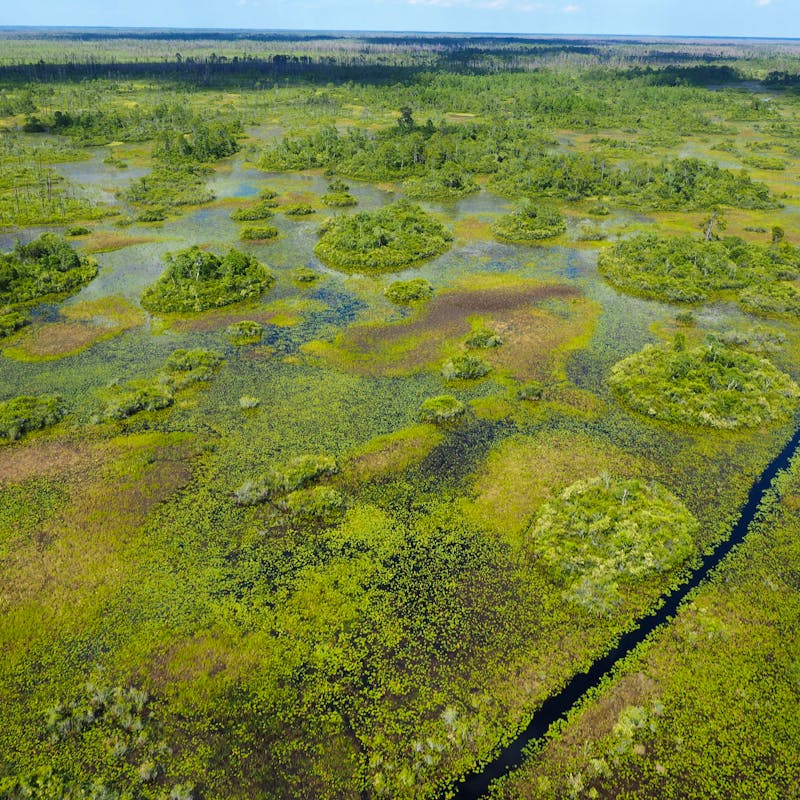Known as the “river of grass,” the Greater Everglades Ecosystem encompasses 18,000 square miles from the Kissimmee Prairie near Orlando to Florida Bay at the southern tip of Florida.
This expansive area includes three national parks, more than a dozen national wildlife refuges and marine preserves, as well as a host of state, regional and local parks, forests and wildlife management areas. Everglades National Park in south Florida is recognized as an International Biosphere Reserve, a World Heritage Site and a Ramsar Wetland of International Importance.
Extensive private land holdings in the region are also an integral component of valuable wildlife habitat ranging from vast ranch lands to thousands of small-acre lots. Biodiversity is among the highest in the nation, with many species found nowhere else in the U.S.
Many of Defenders’ key species are in the region, including Florida panthers, manatees, sea turtles, gopher tortoises and other listed species such as the Everglade kite, wood stork, Big Cypress fox squirrel, American crocodile and Key deer. One third of all Floridians rely on clean water from the Greater Everglades Ecosystem, and more than 120 federal and state endangered and threatened species depend on the region’s varied wetland, upland and marine habitats.
Years of draining its wetlands for development and agriculture and encroachment by an ever-increasing Florida population have taken a toll on the now endangered ecosystem. Water, the most fundamental resource in the Everglades, has been diverted and rerouted out to sea, away from the plants and animals that need it.
With projected rises in sea level of three feet or more over the next century, much of the low-lying Everglades ecoregion is at risk of being submerged under water and climate change is also impacting water temperatures and increasing the severity and frequency of storms.
Invasive animals and plants including the Burmese python, tegu lizards, Australian pine and Brazililan pepper are widespread in the Everglades requiring agencies to spend millions annually for eradication, containment and long-term management.
Defenders is a consistent force pressing for landscape level conservation of connected wetland and upland systems.
Our primary objectives in the region include working to create and expand national wildlife refuges and other public conservation lands, collaborating with large landowners to conserve habitat on private lands for panthers and many other species, advocating for land acquisition and conservation easements, funding to fight invasive species, and improving land-use and transportation policies and programs to protect wildlife habitat and travel linkages.
For example, Defenders was a key player in a successful, sustained effort to stop the construction of a new interchange on Interstate 75 (“Alligator Alley”) that crosses the Big Cypress/Everglades ecosystem. The proposed interchange would have led to the destruction of 10,000 acres of habitat for panthers and other wildlife, severed important wildlife corridors, compromised Everglades restoration in the Picayune Strand, encouraged urban sprawl and exacerbated vehicle collisions near the Florida Panther National Wildlife Refuge.
Defenders is advocating for maximum protection for wildlife and habitat during a process to plan for new toll roads. In 2019, the Governor approved a process to plan for three new toll highways that would run through some of the last undeveloped lands in the western Everglades up to the Florida-Georgia border. These highway projects have the potential to undo decades of conservation gains and could dramatically affect habitat for Florida panthers.







